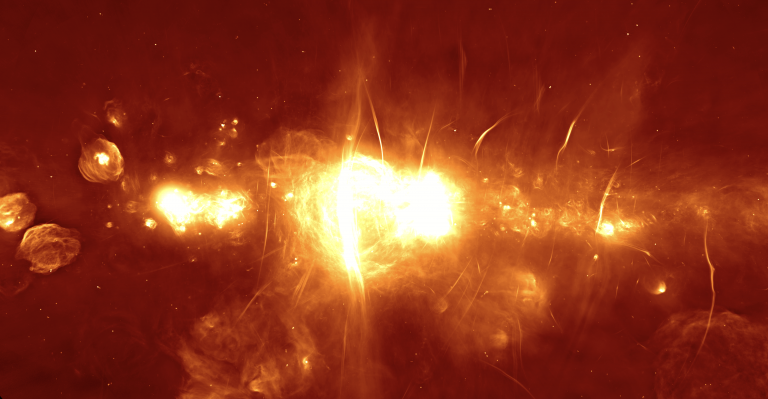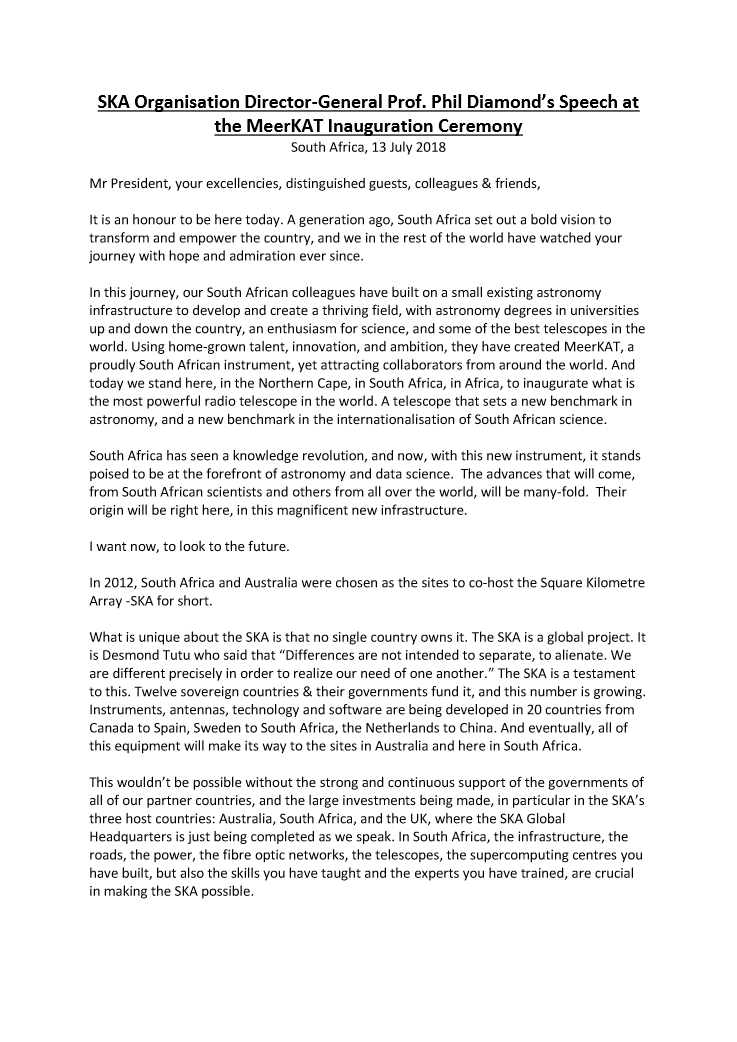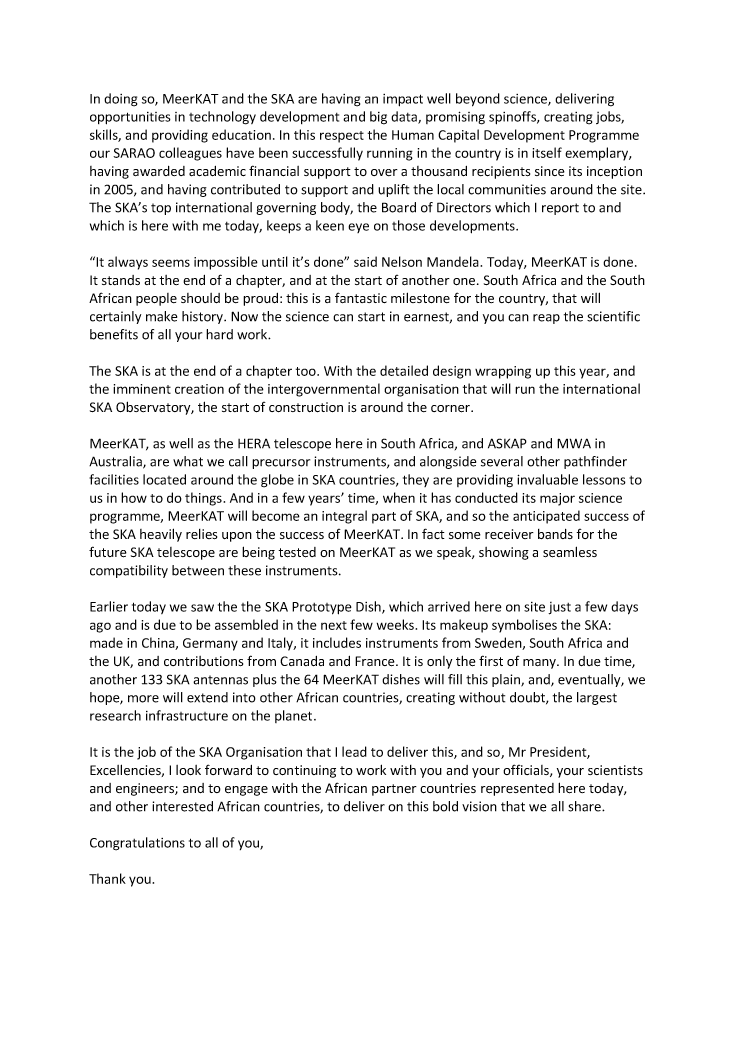SKA precursor telescope MeerKAT inaugurated in South Africa

Built and operated by the South African Radio Astronomy Observatory (SARAO), and a decade in design and construction, the MeerKAT facility has already begun science operations. A stunning new panorama obtained by the telescope was unveiled during the event, revealing extraordinary detail in the region surrounding the supermassive black hole at the centre of our Milky Way Galaxy.
MeerKAT is an SKA precursor telescope and it will ultimately be incorporated into the SKA’s mid-frequency array of some 200 dishes in the Karoo region, but it is a world-class facility in its own right and promises to deliver even more exciting science in the coming years.
“MeerKAT stands at the end of a chapter, and at the start of another one,” said SKA Director-General Prof. Phil Diamond in an address at the ceremony. “South Africa and the South African people should be proud: this is a fantastic milestone for the country, that will certainly make history. Now the science can start in earnest, and you can reap the scientific benefits of all your hard work.”
The 64 dishes provide 2,000 unique antenna pairs, far more than any comparable telescope, resulting in high-fidelity images of the radio sky. The image unveiled today shows the clearest view yet of the central regions of our galaxy.
“We wanted to show the science capabilities of this new instrument,” said Fernando Camilo, chief scientist at SARAO. “The centre of the galaxy was an obvious target: unique, visually striking and full of unexplained phenomena – but also notoriously hard to image using radio telescopes. Although it’s early days with MeerKAT, and a lot remains to be optimised, we decided to go for it – and were stunned by the results.”
The centre of the Milky Way, 25,000 light-years from Earth, is forever enshrouded by intervening clouds of gas and dust, making it invisible from Earth using optical telescopes, but radio wavelengths pass through the dust.
“This image is remarkable,” says Farhad Yusef-Zadeh of Northwestern University in Evanston, Illinois, one of the world’s leading experts on the mysterious filamentary structures present near the central black hole but nowhere else in the Milky Way. These long and narrow magnetized filaments were discovered in the 1980s using the Very Large Array (VLA) radio telescope in New Mexico, but their origin has remained a mystery. “The MeerKAT image has such clarity. It shows so many features never before seen, including compact sources associated with some of the filaments, that it could provide the key to cracking the code and solve this three-decade riddle.”
You can read the full release on the SARAO website.
A copy of the SKA Director-General’s speech can be read below:






